Perfect Soft & Chewy Sourdough Sugar Cookies Recipe
Baking a batch of sugar cookies always feels like pressing pause for a moment. The house fills with the scent of butter and vanilla, and everything slows down. These sourdough discard sugar cookies bring that same familiar comfort, with a soft center, golden edges, and just a touch of tang from the starter.
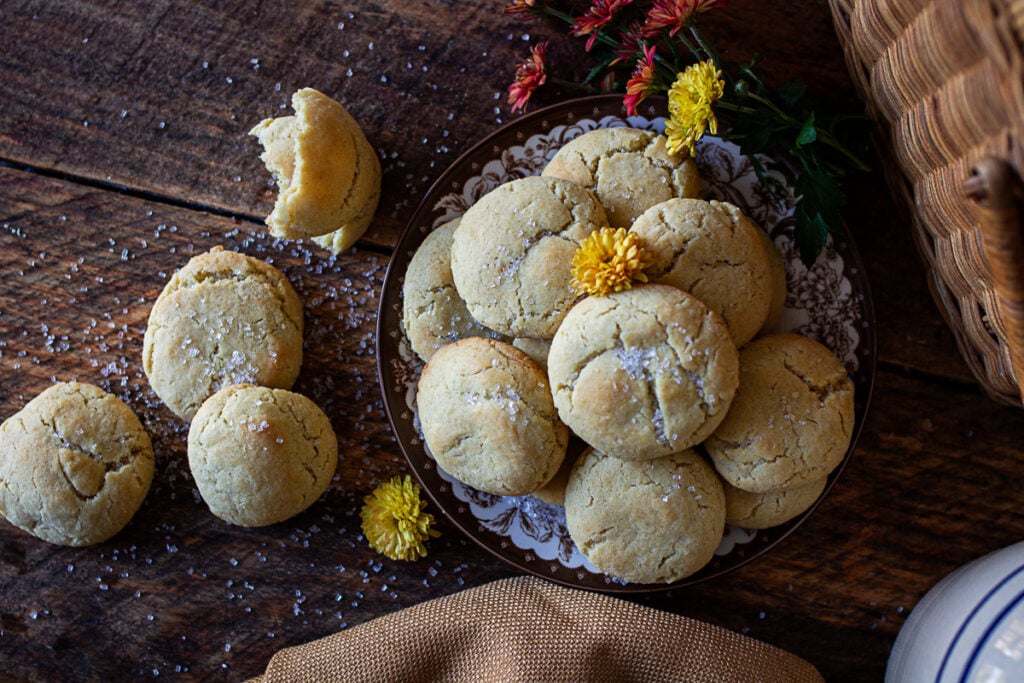
On our homestead, this recipe has become a favorite way to use up sourdough discard. I love that it turns something simple, a scoop of leftover starter, into a sweet treat. My sourdough jar rarely rests between bakes; it's part of daily life here, finding its way into quick sourdough breadsticks, easy flatbreads, discard cheese crackers, and now, the best chewy sourdough sugar cookies you'll ever make.
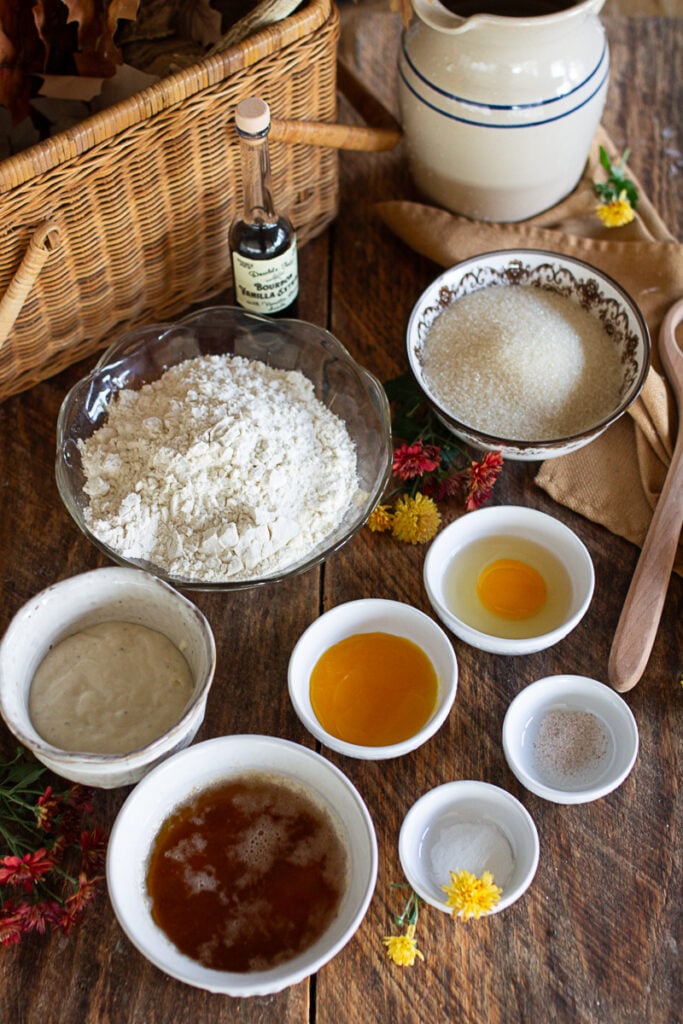
Why You'll Like This Recipe
- Perfect chewy texture: These chewy sourdough sugar cookies stay soft in the center with crisp edges, the best results every time.
- Simple ingredients: Browned butter, white sugar, quality flour, and sourdough starter discard make up the base of this recipe.
- Great way to use leftover starter: Turn extra sourdough discard into chewy cookies with a slight tang and rich, buttery flavor.
- Versatile dough: Use cookie cutters to make rolled cookie dough for the holidays or keep them simple for everyday baking.
- Beautiful flavor: The combination of vanilla extract and browned butter gives these cookies a cozy sweetness that balances the tangy flavor of the starter.
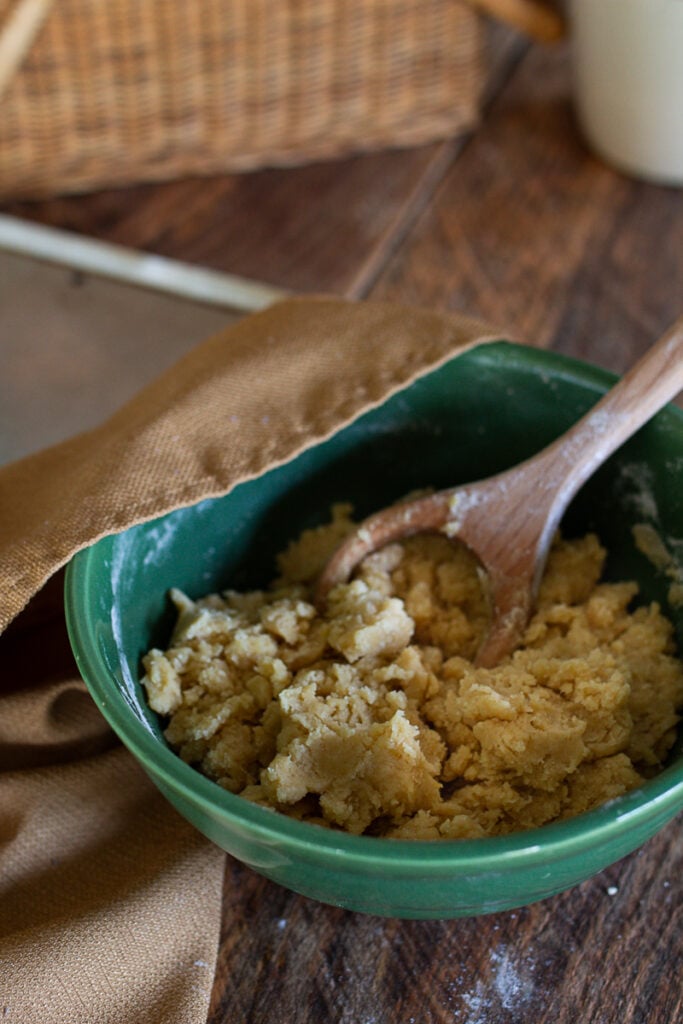
About the Flour & Ingredients
For chewy sugar cookies that hold their shape, I recommend using high-protein, unbleached organic all-purpose flour. The added protein gives structure and keeps the cookies from spreading too much. When you use quality flour, you also retain more nutrients and reduce phytic acid, which can help with digestion, especially in long fermentation recipes.
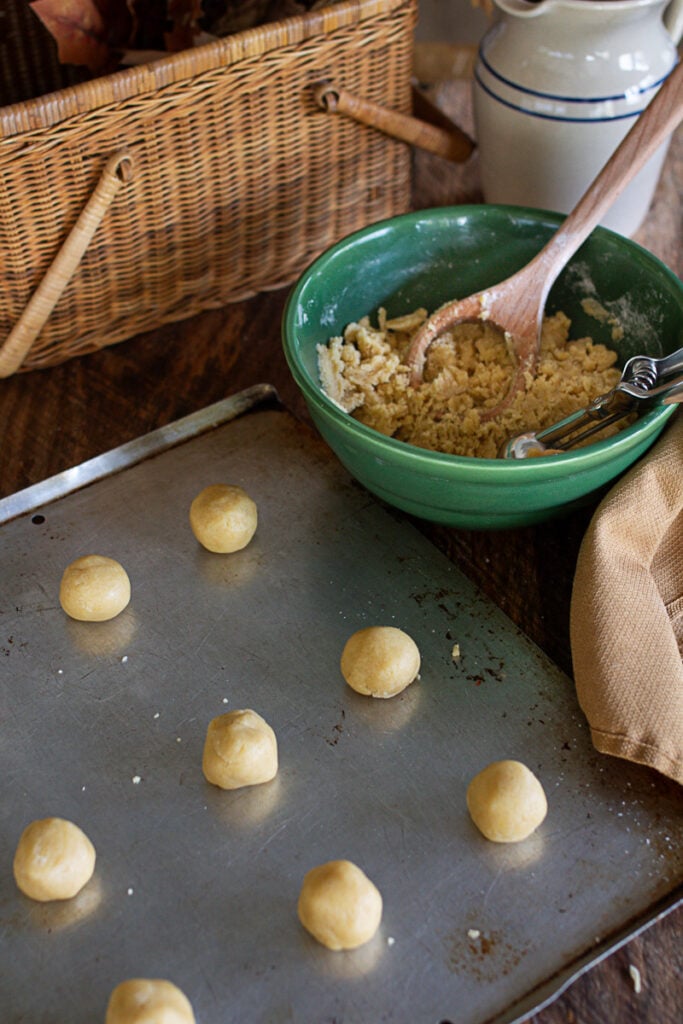
If your kitchen runs warm or you tend to add too much flour, let the dough rest in the fridge for about 30 minutes before baking. It helps the dough ferment slightly, deepening that hint of sourdough flavor while keeping the cookie dough balls firm.
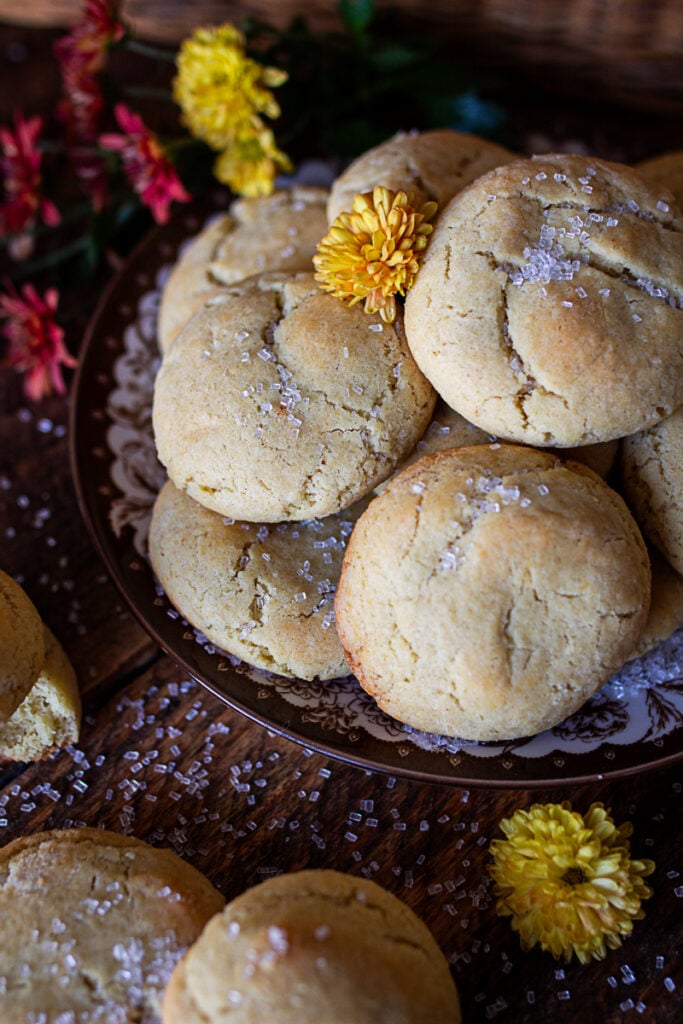
Use browned butter that's been cooled slightly before mixing, just warm to the touch, not hot. It blends beautifully with the sugar and gives these cookies that deep, nutty flavor we all love. For the eggs, I like using two yolks and one whole egg; the extra yolk keeps the cookies soft and chewy without drying them out.
How to Brown Butter
Browning butter is one of those small steps that completely transforms a recipe. To make it, melt your salted butter in a small saucepan over medium heat, stirring often. The butter will foam as the water cooks off, and then the milk solids will begin to brown at the bottom.
Keep a close eye, it can go from golden to burnt quickly. When it turns a warm amber color and smells nutty, like toasted caramel, it's ready. Remove it from the heat immediately and pour it into a heat-safe bowl to stop the cooking. Once slightly cooled, that browned butter adds a rich, deep flavor that makes baked goods taste almost caramelized - cozy, buttery, and just a little indulgent.
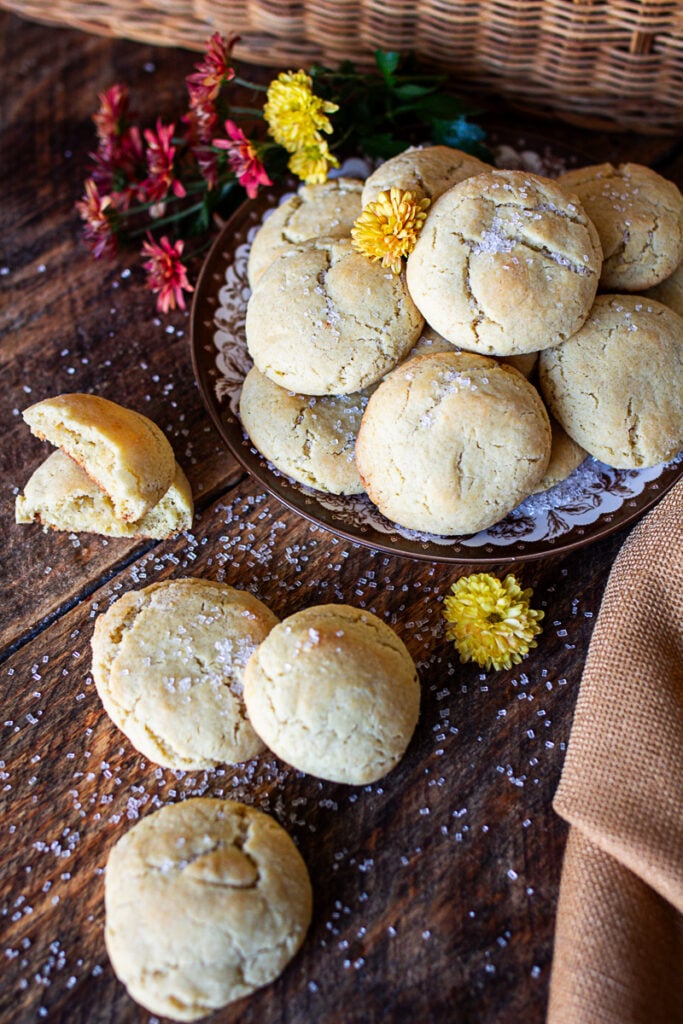
Mixing the Dough
- Brown the butter: In a small saucepan over medium heat, melt the unsalted butter until golden and nutty. Let it cool completely before using.
- Cream the butter and sugar: In the bowl of a stand mixer fitted with the paddle attachment (or use a hand mixer), beat the cooled browned butter and white sugar on medium speed until smooth and light in color. Scrape down the sides of the bowl as needed. The browned butter gives these cookies a caramel-like depth, even though they're made with simple white sugar.
- Add wet ingredients: Whisk together the egg, egg yolk, and vanilla extract. Add to the mixer and blend until smooth. Mix in your sourdough starter discard and continue mixing until fully incorporated.
- Combine dry ingredients: In a medium bowl, whisk together the flour, salt, and baking soda, until combined. Add the dry ingredients to the wet ingredients in two parts, mixing on low speed after each addition. Stop when the dough just comes together.
- Optional flavor variations: For a slightly different twist, add a splash of almond extract. It complements the tangy flavor of the cookies beautifully.
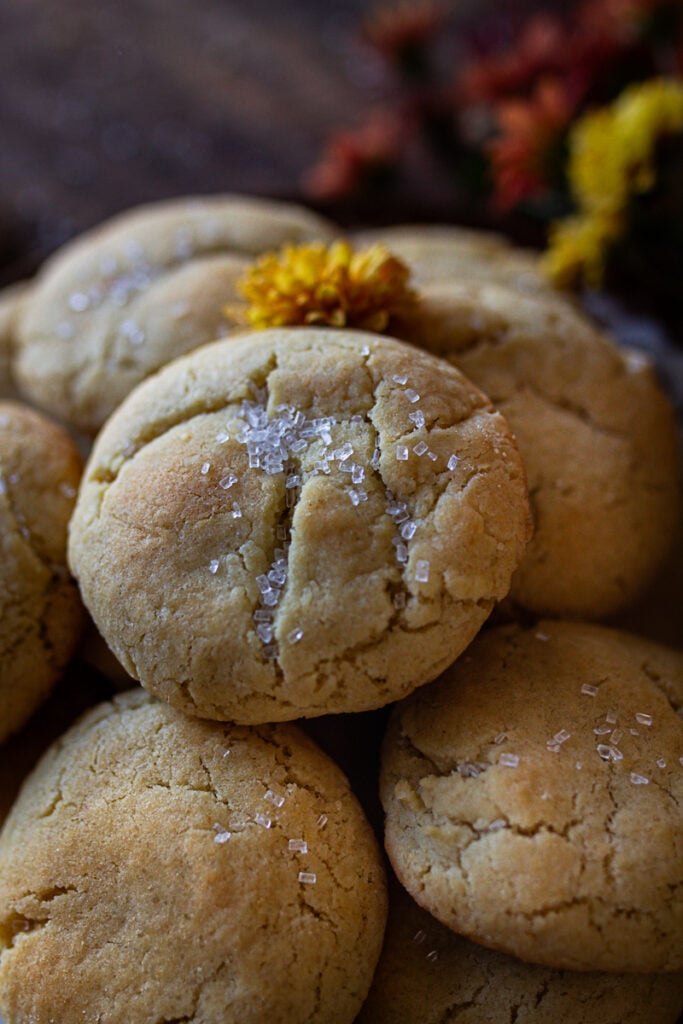
Shaping & Baking
- Line two large baking sheets (or cookie sheets) with parchment paper.
- Use a cookie scoop to portion dough into small cookie balls. Roll each between your hands for smooth edges.
- Place cookie dough balls 2 inches apart on the prepared baking sheet.
- Bake at 350°F (175°C) for 9-11 minutes of bake time, until the tops of the dough are just set and the edges turn golden brown.
- Let them cool on the cookie sheet for 2 minutes, then transfer to a wire rack to cool completely.
For cut-out Christmas cookies, roll out the chilled dough on a lightly floured work surface with a rolling pin, about ¼ inch thick. Use your favorite cookie cutters (3-inch cookie cutter works great) and bake as directed.
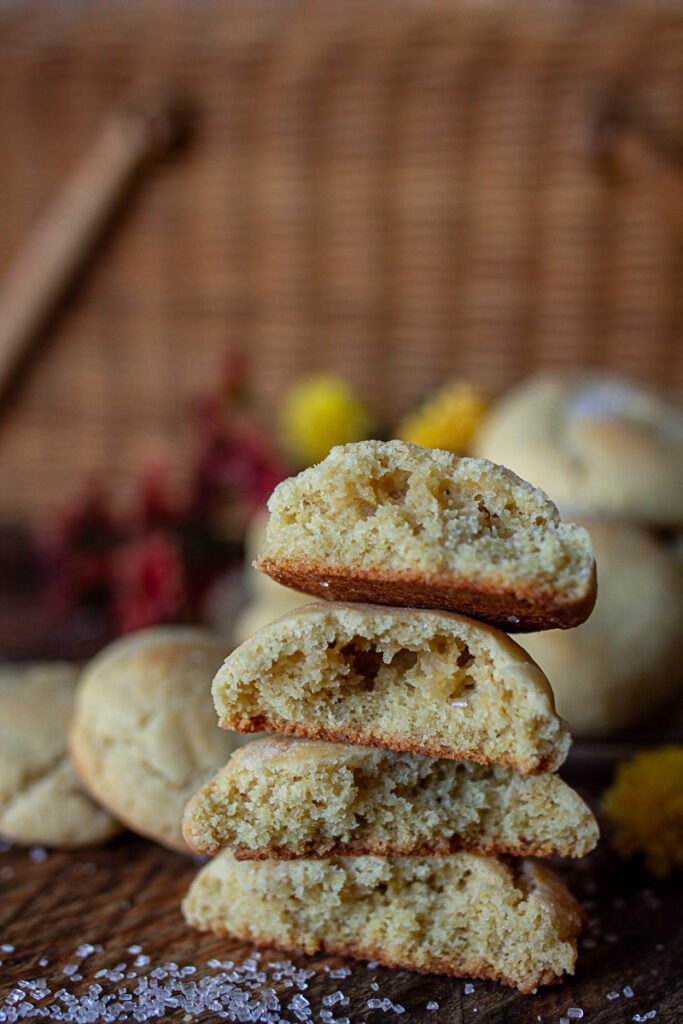
Storage & Serving
- Room temperature: Store in an airtight container on the counter for up to 5 days.
- Freezer: Freeze baked cookies or rolled cookie dough for up to 3 months. Bake frozen dough straight from the freezer, adding 1-2 minutes of bake time.
- Best served: Slightly warm from the oven with coffee or a glass of milk.
If you plan to frost them for the holiday season, a simple royal icing or a dusting of powdered sugar adds a festive touch.
FAQ
Can I use active starter instead of discard?
Yes, active starter or sourdough starter discard both work. Active starter gives a lighter, puffier cookie, while discard makes them a bit denser with more tang.
Can I substitute the butter?
I don't recommend it. Brown butter adds rich, nutty flavor that really elevates the flavor of the cookies.
What's the purpose of long fermentation in cookies?
Allowing the dough rest overnight (or even 24 hours) deepens the flavor and reduces phytic acid in the flour, making it easier to digest.
Can I make these into sourdough chocolate chip cookies?
Absolutely! Fold in mini or regular chocolate chips for a chewy sourdough cookie variation.
How do I measure the ingredients accurately?
Use a kitchen scale for the best results. Too much flour will make a cakey cookie instead of a chewy one. If using measuring cups, spoon flour into the cup and level it off.
What's the difference between egg yolks and egg whites in cookies?
Egg yolks add richness and chewiness, while egg whites can make the dough a bit crisper. This recipe uses both for balance.
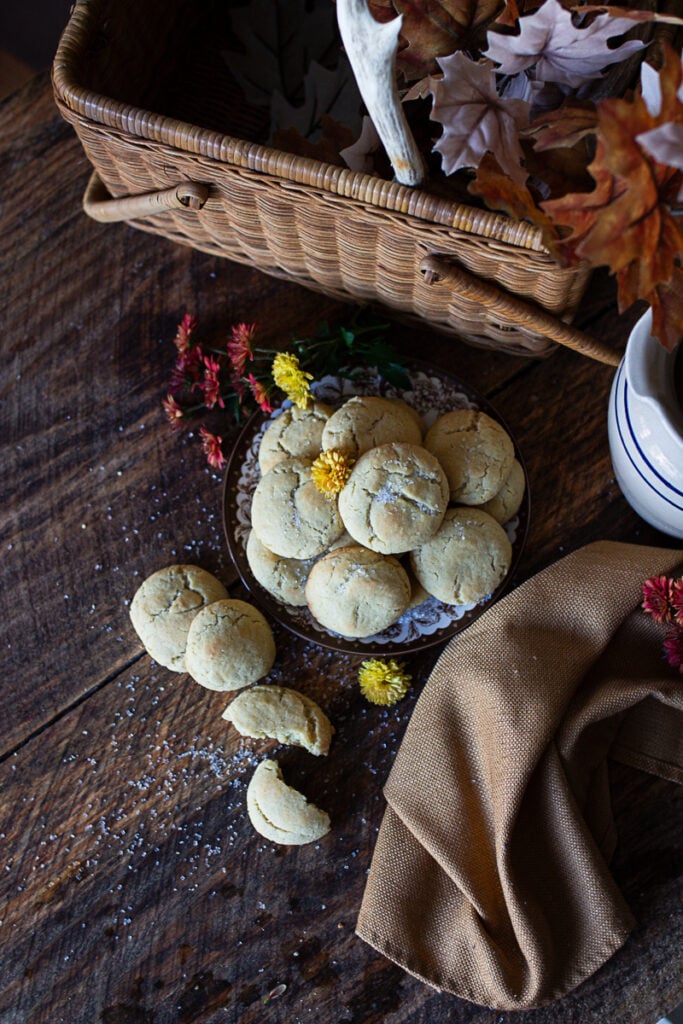
Final Thoughts from the Homestead
Baking with sourdough discard is one of my favorite ways to stretch what we already have. These chewy sourdough sugar cookies are simple, cozy, and perfect for any season. Whether you bake them plain for fall or decorate them with royal icing for Christmas cookies, they'll quickly become part of your family's cookie tradition.
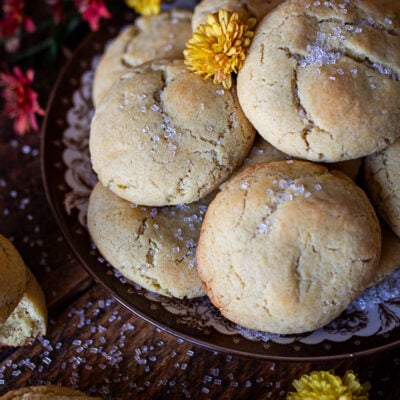
Sourdough Discard Sugar Cookie Recipe Card
Ingredients
- 1 cup browned unsalted butter (225 g)
- 1 ¾ cups white sugar 350 g
- 2 egg yolks + 1 whole egg about 100 g total
- ¾ cup sourdough starter discard or active starter 180 g
- 1 teaspoon vanilla extract 5 g
- 3 cups all-purpose flour 375 g
- ½ teaspoon salt 3 g
- 1 teaspoon baking soda 5 g
Instructions
- Brown butter and let it cool completely.
- In a large mixing bowl or the bowl of a stand mixer with the paddle attachment, cream butter and sugar on medium speed until fluffy.
- Add egg, yolks, and vanilla extract. Mix until smooth. Stir in sourdough starter discard.
- In a separate bowl, whisk together dry ingredients: flour, salt, and baking soda.
- Add flour mixture to the wet ingredients in stages, mixing on low speed until a soft dough forms.
- Scoop cookie dough balls onto a parchment-lined cookie sheet.
- Bake at 350°F (175°C) for 9-11 minutes, or until edges are golden brown.
- Cool on the baking sheet 2 minutes before transferring to a wire rack.
Notes
- Use room temperature butter: Soft, but not melted, butter creams best with sugar and helps the cookies hold their shape.
- Don't skip the dough rest: Letting the dough chill for 30 minutes deepens the flavor and keeps the cookies from spreading too much.
- Weigh your ingredients: Using a kitchen scale gives more consistent results, especially for flour and sourdough discard.
- Flavor variations: Add a touch of almond extract or brown the butter before mixing for deeper flavor.
- For the best texture: Bake just until the edges turn lightly golden - this keeps the centers soft and chewy.
- Sourdough discard: Unfed or freshly fed discard both work. A more mature starter will give a slightly tangier flavor.
- Storage: Keep cookies in an airtight container at room temperature for up to 5 days, or freeze for up to 3 months.
- Make-ahead tip: You can refrigerate the dough for up to 48 hours before baking for even more developed flavor.
- For holiday decorating: These roll out beautifully! Use your favorite cookie cutters and royal icing to turn them into Christmas cookies.
- Perfect for gifting: Stack cooled cookies in a glass jar or tin lined with parchment paper - simple, cozy, and thoughtful.
Nutrition
Final Thoughts from the Homestead
I hope this recipe finds its way into your kitchen on one of those slow afternoons, maybe when the kids are playing in the leaves falling outside, the air smells like autumn, and someone quietly sneaks the first cookie off the cooling rack. Around here, baking is never just about the cookies; it's about slowing down, filling the house with warmth, and sharing small, sweet moments together. If you make these, I'd love to see a glimpse of your kitchen life, tag me on Instagram so I can share in the joy.
More recipes you'll love:
Meet Eryn
Eryn Whalen is a homestead blogger and recipe developer with decades of hands-on experience in gardening, home canning, animal husbandry, and traditional kitchen skills.On her family's 100-acre Tennessee farmstead, she shares the daily beauty of homestead life: from milking cows at sunrise to filling the pantry with homegrown food and baking from scratch in her farmhouse kitchen. Read more about Eryn here


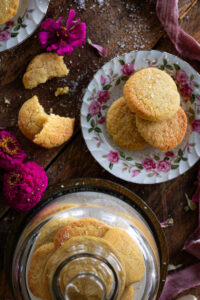
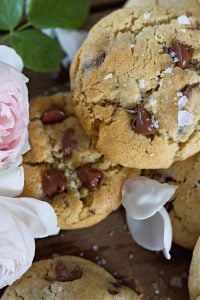



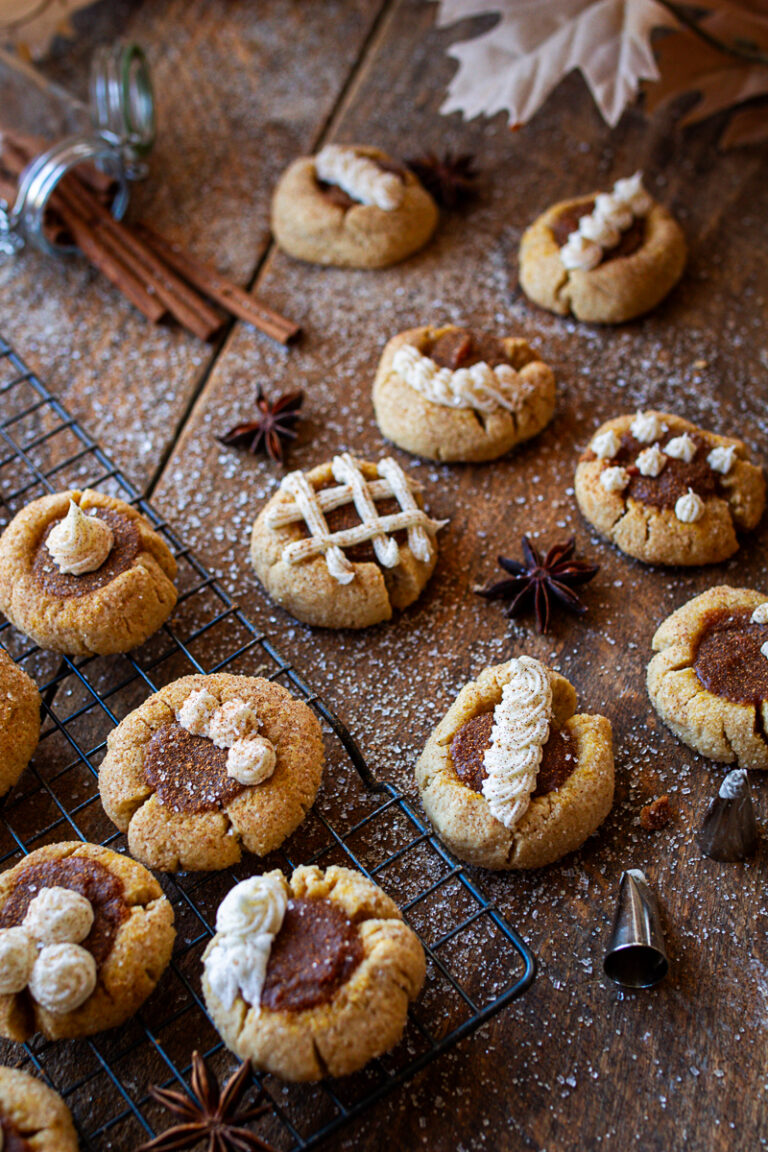
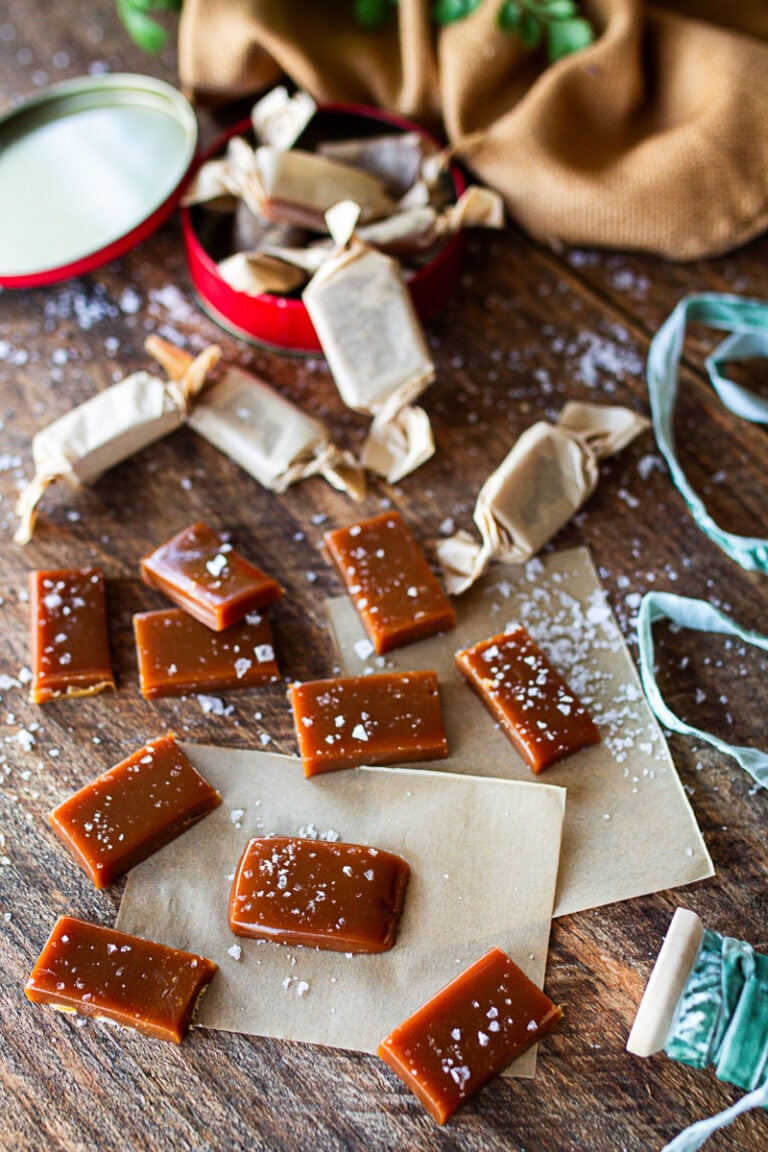

These sourdough sugar cookies are everything a cookie should be—soft, chewy, buttery, and just a little tangy from the starter. The browned butter gives them that warm, caramel-like flavor that makes the whole kitchen smell amazing. I love that they’re an easy way to use up discard and still feel special. Letting the dough rest for a bit before baking really deepens the flavor. These have officially earned a permanent spot in my cookie tin!